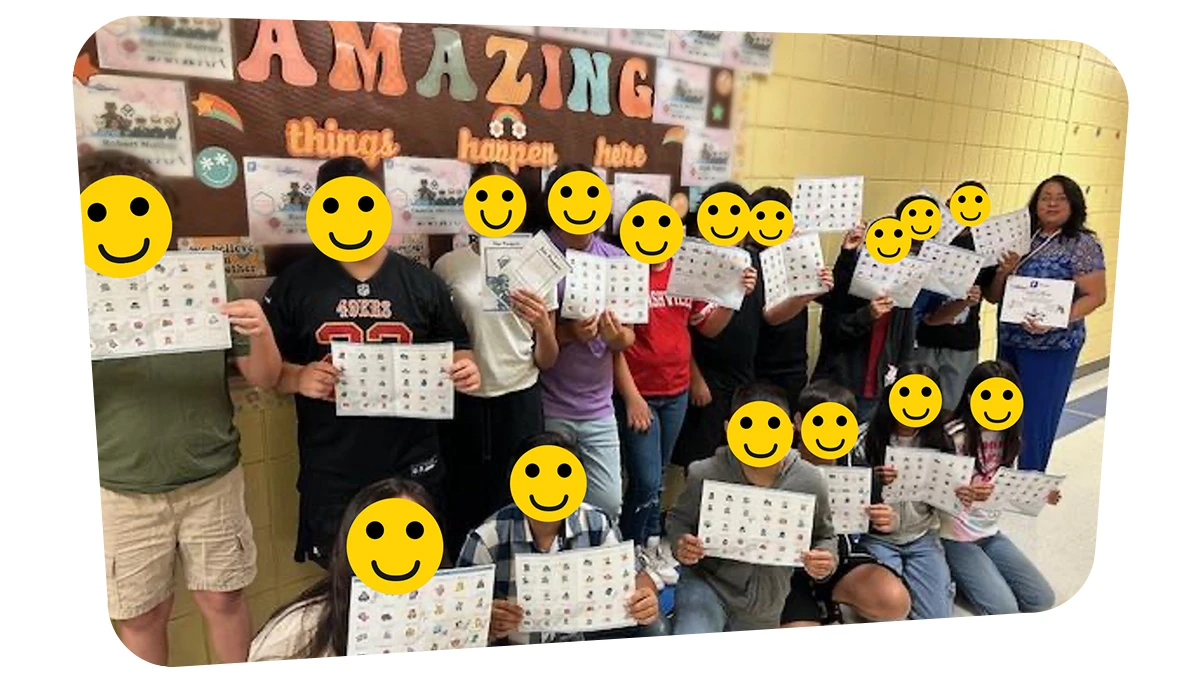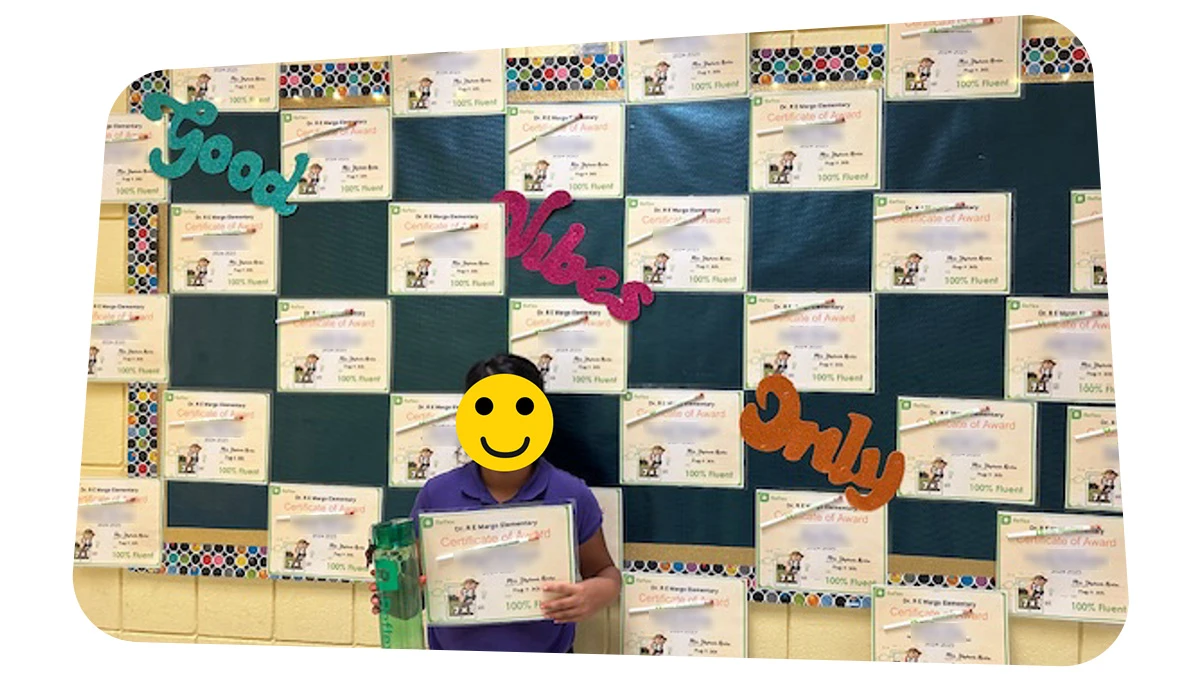- Home
- Success Stories
- Success Story Article
Stephanie Rivera: A Legacy of Empowerment Through Math Education

Stephanie Rivera is a dedicated educator with over 23 years of experience serving the Weslaco Independent School District students, in the heart of the Lower Rio Grande Valley in Texas. She was selected as Teacher of the Year during COVID-19 (2020-2021), having been the only teacher physically meeting the students on campus. She has taught 3rd through 4th-grade math and science. Currently, she teaches 4th grade math at Dr. R. E. Margo Elementary—one of the largest elementary schools in Hidalgo County, serving over 1,089 students, PreK-5th grades.
Rivera’s passion for education is rooted in the strong sense of community that defines Weslaco—a place where families come first and every child’s potential matters. Her teaching journey began with a deeply personal inspiration: her favorite math teacher in high school, Mr. Esteban Salinas. His patience, encouragement, and unwavering belief in his students left a lasting impression, no matter their background.
“Mr. Salinas was always one teacher I could count on,” Rivera recalls. “He helped turn my bad days into good ones.”
That experience sparked a lifelong mission—to become the kind of teacher who makes a lasting difference in her students’ lives, just as Mr. Salinas had done for her.
Although she once served as an Instructional Coach at North Bridge Elementary, Rivera eventually returned to the classroom, where her heart truly belongs. “There’s nothing more rewarding than seeing a child’s confidence grow when they finally grasp a concept,” she shares. “Those ‘aha’ moments are priceless.”
Integrating Reflex and Frax into the classroom
Rivera’s commitment to student growth is evident in her thoughtful integration of ExploreLearning’s Reflex and Frax game-based programs into her instructional routine. In her 4th-grade math classroom, these tools are fully embedded into the daily schedule, primarily used in a rotational “GUIDE” model during math stations. This allows students to engage in targeted, individualized practice with Reflex (for math facts) or Frax (for fractions) while Rivera works with small groups through targeted instruction.
The programs are also offered as homework options or early finisher activities. Students used data folders to track their math fact fluency progress in Reflex with “Green Light Calendars.” For Frax, she used “Mission Stickers.” Students looked forward to Friday Teacher Conferences, so they could receive their rewards for reaching their weekly goals.
“The consistent exposure helps students build fluency and conceptual understanding over time,” she says. “And the data gives me a clear picture of where they are and what they need.”
According to Rivera, one of the greatest strengths of Reflex and Frax is their flexibility. She can easily adapt their use to fit her district pacing calendar and address her students’ evolving needs throughout the year.

Building confidence and changing mindsets
Reflex and Frax have had a transformative effect on her students, especially those who arrive with gaps in foundational skills or math anxiety. Moving from 3rd to 4th grade, she witnessed firsthand how beneficial the routine was in utilizing the programs effectively and efficiently.
Many of her students are from low socio-economic backgrounds, including emerging bilinguals and students receiving Special Education services. Math used to be a source of stress. Now, it's something they look forward to.
“I’m good at this now!”
“I want to beat my score from yesterday!”
These are the kinds of comments Rivera hears regularly. The real-time feedback, goal tracking, and gamified learning environment of Reflex and Frax create a sense of progress and pride. Over time, students who once felt unsure or defeated begin to see themselves as capable mathematicians.
From fluency to mastery
Rivera identifies multiplication fluency as one of the biggest challenges in 4th-grade math, especially with large class sizes and a wide range of skill levels. Before Reflex, students who hadn’t mastered their facts would quickly fall behind when transitioning to multi-step word problems or long division.
“Reflex completely changed that,” she explains. “Once students became fluent, they could focus on deeper problem-solving and critical thinking.”
Likewise, Frax helped demystify fractions, a topic that often intimidates young learners. Its use of visual models and step-by-step progression made complex ideas more accessible and engaging, even for students who struggled with abstract thinking. Being able to convert visual models into numerical representations made fractions easier to understand.
The data told a powerful story by the end of the school year: although most students began the year at or below 50% fluency, nearly every student reached 100% mastery by the final week of the school year.

More than just numbers
Beyond academic growth, Rivera witnessed a shift in classroom culture. Students celebrated each other’s successes, held themselves accountable, and approached math with excitement rather than dread.
“Reflex and Frax didn’t just improve scores—they changed the way my students saw themselves. They became more motivated, more confident, and more supportive of one another.”
—Stephanie Rivera
These tools also changed the way Rivera teaches. She has become even more intentional about building routine, goal-setting, and student ownership into her instruction practices that now shape everything from lesson planning to student conferencing. Rivera needs to take it to the next level of finding sponsors or creating Donors Choose projects.
A vision for the future
Rivera sees a powerful shift taking place as more teachers across her school and district begin to adopt Reflex and Frax. “When you combine high-quality digital tools with strong relationships and consistent support, students thrive,” she emphasizes. “These programs aren’t just supplements—they're essential tools in our math instruction.”
For any teacher considering trying Reflex or Frax, Rivera offers simple advice: “Stick with it. Build it into your routine, celebrate your students' progress, and watch their confidence soar. You’ll be amazed at what they can do.”
Through her unwavering dedication, compassion, and innovative use of technology, Rivera continues to shape a legacy that began with one inspired teacher—and is now touching the lives of hundreds of students each year.
Advice for teachers considering Reflex and Frax
If you’re considering implementing Reflex or Frax in your classroom, Rivera says to go for it and stay consistent. “These programs aren't just digital tools; they're powerful supports that can transform student confidence and fluency in math,” she said. “The key is to make them part of your routine. Whether you use them during math stations, as early finisher work, or for homework, the consistency will lead to measurable growth.”
Rivera continued, “Celebrate progress regularly, even the small wins. Students thrive when they can see how far they've come, and Reflex and Frax do an excellent job of providing real-time feedback and goal tracking. When students start saying, ‘I’m getting better!’ or ‘I beat my score from last week!’—that’s when the magic happens.”
Rivera suggests that teachers give it time. “Student buy-in might take a little while, especially at the beginning of the year. But once they understand the structure and begin to see results, motivation increases naturally. You’ll see students who once dreaded math begin to look forward to it.”
Most importantly, Rivera says to remember that you don’t have to be perfect to get started. “The programs are flexible and will grow with your classroom needs. Use the data they provide to guide your instruction and give targeted support where it’s needed.”
Empower every learner with Reflex and Frax
For tools that build fluency, fraction understanding, and confidence while turning struggling students into successful, motivated learners, Rivera knows that Reflex and Frax are worth it!
See the difference in your classroom with a free Reflex or Frax trial.
You might also like these stories...
